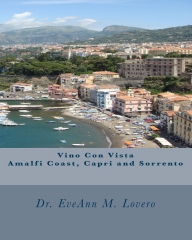Prairie Avenue has always been influential in Chicago’s History with grand mansions and influential residents. During the late 19th century, Chicago’s most prestigious residential street was Prairie Avenue.
There are usually plenty of Halloween Happenings on Prairie but with COVID who knows what will happen?
Here are some of the events from prior years
2. Children’s Halloween Party

William W. Kimball Home on Chicago’s Prairie Street Historic District
Prairie Avenue is located in Chicago’s South Loop neighborhood on the South Side of Chicago. The Prairie Avenue District is a Chicago Landmark district and was added to the National Register of Historic Places. During the Columbian Exposition, Prairie Street was considered a “Must See” destination. I love the chateaux style residence at 1802 S. Prairie, formerly owned by the owner of the Kimball Piano and Organ Company. It was designed by the architect Solon S. Beman. Today, it serves as the headquarters for the U.S. Soccer Federation.

Joseph G. Coleman House at 1811 S. Prairie in Chicago

Several of Chicago’s most notable families and important historical figures have lived in the South Loop Prairie Avenue District. Today the street is full of new construction that blends into the style of the existing historic landmarks.



Empire style Elbridge G. Keith House at 1900 S. Prairie
Many wealthy Chicago “Movers and Shakers” moved to Prairie Street after the Great Chicago Fire of 1871. Some of the prominent families that lived here included: the Pullmans, the Fields, the Armours and the Kimballs. When Philip Armour joined Field and Pullman on Prairie Street in 1875, Chicago’s three wealthiest citizens lived within a four block stretch of this historic neighborhood. These prominent Chicago legends influenced the political history, the architecture, the culture, the economy, as well as the law and government of Chicago. Prairie Street lost some of its luster as the neighborhood became more industrialized and the demographics of Chicago changed over time. The Gold Coast and the North Shore became the more desirable areas for Chicago’s wealthy residents.
Although most of the houses have been demolished, you can still tour the 17,000 square foot Glessner House at 1800 S. Prairie. It was designed in 1885-1886 by Boston architect Henry Hobson Richardson and completed in late 1887. The granite fortress-like exterior conceals a large central courtyard.

Original Front Door of the Glessner House on Prairie Avenue in Chicago



The property was designated a Chicago Landmark on October 14, 1970. The site was listed in the National Register of Historic Places on April 17, 1970 and as a National Historic Landmark on January 7, 1976. It’s possible to have a wedding at this historic residence in the lovely courtyard.

The Glessner House Courtyard on Prairie Avenue
Many newlyweds like to have their pictures taken at the “G” Door. If you turn the entrance to the staircase around, it forms the letter “G”.

The G Door of the Glessner House on Prairie Avenue
John Glessner was one of the original founders of International Harvester, which became the fourth largest corporation in the country. Glessner was appointed vice president and continued in that capacity until his death in 1936 at the age of 92.

The G Door of the Glessner House on Prairie Avenue

When Frances and John J. Glessner and his family needed a winter house in Chicago, Mr. Glessner decided to build a home for his family on Prairie Avenue and 18th Street. He chose one of the nation’s foremost architects, H. H. Richardson.

H. H. Richardson note to Mr. Glessner
Henry Hobson Richardson (September 29, 1838 – April 27, 1886) was born in Louisiana and became a prominent American architect. His portrait hangs in the foyer of the Glessner House, surrounded by oak walls and a stately fireplace.

H. H. Richardson
Richardson’s work had an impact on Boston, Pittsburgh, Buffalo, Albany, and Chicago. The style that Richardson developed over time was medieval and fortress-like. His contributions are called Richardsonian Romanesque. He inspired Louis Sullivan and Frank Lloyd Wright.

H. H. Richardson
Richardson studied at Harvard College and Tulane University. Initially he was interested in civil engineering, but eventually shifted to architecture. His passion led him to Paris in 1860 where he attended the famed École des Beaux Arts in the atelier of Louis-Jules André. He was the second US citizen to attend the École des Beaux Arts. Richard Morris Hunt was the first American student. The French School played an increasingly important role in training American architects. Trinity Church in Boston built in 1872, is Richardson’s most acclaimed early work. This church solidified his reputation and provided major commissions for him for the remainder of his life.

The Glessner House interior on Prairie Avenue

Take a guided tour of the elegant interior of the house that Richardson designed. It was rescued from demolition in 1966. It has been lovingly restored and is furnished with many of the original “Arts and Crafts” period furniture and an extraordinary collection of pottery and decorative arts.

Glessner House restored Parlor with pottery

Glessner House pottery
I love the elaborate tiles on the fireplaces in this house and the piano that was returned to the house from the President of Harvard University.

Glessner House restored fireplace

Glessner House original Parlor Piano
The Eastlake style furniture was designed by Isaac Elwood Scott. The lavish parlor of the Glessner House Museum was restored recently with generous gifts from patrons including the Bunny J. Selig Memorial fund and the Aileen Mandel Memorial Fund. The dedication ceremony was held on October 14, 2011.
Afterwards, architect and historian John H. Waters presented a lecture on the contributions of William Pretyman. Pretyman produced the original wallcovering in the Glessner parlor.

Glessner House restored Parlor

Glessner House restored Parlor
The Museum offers a variety of programs to the public including lectures on Chicago history and musical programs. On Thursday, November 3, 2011, the Lecture Series will cover “The Architecture of Howard Van Doren Shaw.” For more information visit www.glessnerhouse.org.

Prairie Street has been re-developed with into a vibrant neighborhood with upscale modern housing, but her landmark buildings continue to be the backbone of this historic district.


There are other historical and architectural gems in the area between South Prairie Avenue and South Indiana Avenue. These residences were built from 1870 to 1900. Many important and notable families who were residents of Prairie, influenced the evolution of Chicago. They played a prominent national and international role in Chicago’s rise to a world-class city.
Recently, developments have extended the street north to accommodate new high-rise condominiums, such as One Museum Park, along Roosevelt Road (12th Street). The redevelopment has extended the street so that it has prominent buildings bordering Grant Park with Prairie Avenue addresses.
Dr. EveAnn Lovero writes Travel Guides @ www.vino-con-vista.com

High rises near Chicago’s Prarie District in the South Loop

Related articles
- Chicago Loop is the Perfect Setting for Superman’s “Men of Steel” Movie (vinoconvistablog.wordpress.com)
- Chicago’s Magnificent Buckingham Fountain (vinoconvistablog.wordpress.com)
- Marvel at the Architecture of the Medinah Temple in Chicago (vinoconvistablog.wordpress.com)
- Chicago’s Action-Packed Rush Street Area is a Mecca for Foodies and Fashionistas (vinoconvistablog.wordpress.com)
- The Greek Revival Clarke Museum is the Oldest House in Chicago (vinoconvistablog.me)













